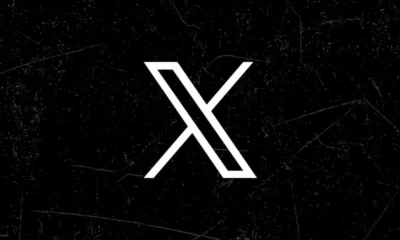SOCIAL
Twitter Expands its Test of User-Reported Misinformation, Expanding Platform Insight

After seeing success with its initial test of a new, manual reporting option, enabling users to flag tweets that contain potentially misleading claims, Twitter is now expanding the test to more regions, with users in Brazil, Spain, and the Philippines now set to get access.
No ano passado, começamos a testar um novo mecanismo de denúncia para informações enganosas nos EUA, Coreia do Sul e Austrália.
Hoje, estamos expandindo este piloto para o Brasil, Espanha e Filipinas.https://t.co/H80pMVLTJY
— Twitter Seguro ???????? (@TwitterSeguroBR) January 17, 2022
Launched in August last year, Twitter’s latest effort to combat misinformation focuses on audience trends and perception of such as a means to determine common issues with the platform, and what people feel compelled to report, pointing to things that they don’t want to see.
The process adds an additional ‘It’s misleading’ option to your tweet reporting tools, providing another means to flag concerning claims.
Which is obviously not a foolproof way to detect and remove misleading content – but as noted, the idea is not so much focused on direct enforcement, as such, but more on broader trends based on how many people report certain tweets, and what people report.
As Twitter explained as part of the initial launch:
“Although we may not take action on this report or respond to you directly, we will use this report to develop new ways to reduce misleading info. This could include limiting its visibility, providing additional context, and creating new policies.”
So essentially, the concept is that if, say, 100, or 1,000 people report the same tweet for ‘political misinformation’, that’ll likely get Twitter’s attention, which may help Twitter identify what users don’t want to see, and want the platform to take action against, even if it’s not actually in violation of the current rules.
So it’s more of a research tool than an enforcement option – which is a better approach, because enabling users to dictate removals by mass-reporting in this way could definitely lead to misuse.
That, in some ways, has borne true in its initial testing – as explained by Head of Site Integrity Yoel Roth:
“On average, only about 10% of misinfo reports were actionable -compared to 20-30% for other policy areas. A key driver of this was “off-topic” reports that don’t contain misinfo at all.”
In other words, a lot of the tweets reported through this manual option were not an actual concern, which highlight the challenges in using user reports as an enforcement measure.
But Roth notes that the data they have gathered has been valuable either way:
“We’re already seeing clear benefits from reporting for the second use case (aggregate analysis) – especially when it comes to non-text-based misinfo, such as media and URLs linking to off-platform misinformation.”
So it may not be a great avenue for direct action on each reported tweet, but as a research tool, the initiative has helped Twitter determine more areas of focus, which contributes to its broader effort to eliminate misinformation within the tweet eco-system.
A big element of this is bots, with various research reports indicating that Twitter bots are key amplifiers of misinformation and politically biased information.
In early 2020, at the height of the Australian bushfire crisis, researchers from Queensland University detected a massive network of Twitter bots that had been spreading misinformation about the Australian bushfire crisis and amplifying anti-climate change conspiracy theories in opposition to established facts. Other examinations have found that bot profiles, at times, contribute up to 60% of tweet activity around some trending events.
Twitter is constantly working to better identify bot networks and eliminate any influence they may have, but this expanded reporting process may help to identify additional bot trends, as well as providing insight into the actual reach of bot pushes via expanded user reporting.
There are various ways in which such insight could be of value, even if it doesn’t result in direct action against offending tweets, as such. And it’ll be interesting to see how Twitter’s expansion of the program improves the initiative, and how it also pairs with its ongoing ‘Birdwatch’ reporting program to detect platform misuse.
Essentially, this program won’t drive a sudden influx of direct removals, eliminating offending tweets based on the variable sensibilities of each user. But it will help to identify key content trends and user concerns, which will contribute to Twitter’s broader effort to better detect these movements, and reduce their influence.
SOCIAL
Snapchat Explores New Messaging Retention Feature: A Game-Changer or Risky Move?

In a recent announcement, Snapchat revealed a groundbreaking update that challenges its traditional design ethos. The platform is experimenting with an option that allows users to defy the 24-hour auto-delete rule, a feature synonymous with Snapchat’s ephemeral messaging model.
The proposed change aims to introduce a “Never delete” option in messaging retention settings, aligning Snapchat more closely with conventional messaging apps. While this move may blur Snapchat’s distinctive selling point, Snap appears convinced of its necessity.
According to Snap, the decision stems from user feedback and a commitment to innovation based on user needs. The company aims to provide greater flexibility and control over conversations, catering to the preferences of its community.
Currently undergoing trials in select markets, the new feature empowers users to adjust retention settings on a conversation-by-conversation basis. Flexibility remains paramount, with participants able to modify settings within chats and receive in-chat notifications to ensure transparency.
Snapchat underscores that the default auto-delete feature will persist, reinforcing its design philosophy centered on ephemerality. However, with the app gaining traction as a primary messaging platform, the option offers users a means to preserve longer chat histories.
The update marks a pivotal moment for Snapchat, renowned for its disappearing message premise, especially popular among younger demographics. Retaining this focus has been pivotal to Snapchat’s identity, but the shift suggests a broader strategy aimed at diversifying its user base.
This strategy may appeal particularly to older demographics, potentially extending Snapchat’s relevance as users age. By emulating features of conventional messaging platforms, Snapchat seeks to enhance its appeal and broaden its reach.
Yet, the introduction of message retention poses questions about Snapchat’s uniqueness. While addressing user demands, the risk of diluting Snapchat’s distinctiveness looms large.
As Snapchat ventures into uncharted territory, the outcome of this experiment remains uncertain. Will message retention propel Snapchat to new heights, or will it compromise the platform’s uniqueness?
Only time will tell.
SOCIAL
Catering to specific audience boosts your business, says accountant turned coach

While it is tempting to try to appeal to a broad audience, the founder of alcohol-free coaching service Just the Tonic, Sandra Parker, believes the best thing you can do for your business is focus on your niche. Here’s how she did just that.
When running a business, reaching out to as many clients as possible can be tempting. But it also risks making your marketing “too generic,” warns Sandra Parker, the founder of Just The Tonic Coaching.
“From the very start of my business, I knew exactly who I could help and who I couldn’t,” Parker told My Biggest Lessons.
Parker struggled with alcohol dependence as a young professional. Today, her business targets high-achieving individuals who face challenges similar to those she had early in her career.
“I understand their frustrations, I understand their fears, and I understand their coping mechanisms and the stories they’re telling themselves,” Parker said. “Because of that, I’m able to market very effectively, to speak in a language that they understand, and am able to reach them.”Â
“I believe that it’s really important that you know exactly who your customer or your client is, and you target them, and you resist the temptation to make your marketing too generic to try and reach everyone,” she explained.
“If you speak specifically to your target clients, you will reach them, and I believe that’s the way that you’re going to be more successful.
Watch the video for more of Sandra Parker’s biggest lessons.
SOCIAL
Instagram Tests Live-Stream Games to Enhance Engagement

Instagram’s testing out some new options to help spice up your live-streams in the app, with some live broadcasters now able to select a game that they can play with viewers in-stream.
As you can see in these example screens, posted by Ahmed Ghanem, some creators now have the option to play either “This or That”, a question and answer prompt that you can share with your viewers, or “Trivia”, to generate more engagement within your IG live-streams.
That could be a simple way to spark more conversation and interaction, which could then lead into further engagement opportunities from your live audience.
Meta’s been exploring more ways to make live-streaming a bigger consideration for IG creators, with a view to live-streams potentially catching on with more users.
That includes the gradual expansion of its “Stars” live-stream donation program, giving more creators in more regions a means to accept donations from live-stream viewers, while back in December, Instagram also added some new options to make it easier to go live using third-party tools via desktop PCs.
Live streaming has been a major shift in China, where shopping live-streams, in particular, have led to massive opportunities for streaming platforms. They haven’t caught on in the same way in Western regions, but as TikTok and YouTube look to push live-stream adoption, there is still a chance that they will become a much bigger element in future.
Which is why IG is also trying to stay in touch, and add more ways for its creators to engage via streams. Live-stream games is another element within this, which could make this a better community-building, and potentially sales-driving option.
We’ve asked Instagram for more information on this test, and we’ll update this post if/when we hear back.
-

 MARKETING6 days ago
MARKETING6 days agoA Recap of Everything Marketers & Advertisers Need to Know
-

 PPC4 days ago
PPC4 days agoHow the TikTok Algorithm Works in 2024 (+9 Ways to Go Viral)
-

 MARKETING4 days ago
MARKETING4 days agoHow To Protect Your People and Brand
-

 SEARCHENGINES5 days ago
SEARCHENGINES5 days agoGoogle Started Enforcing The Site Reputation Abuse Policy
-

 SEO5 days ago
SEO5 days agoBlog Post Checklist: Check All Prior to Hitting “Publish”
-

 SEO3 days ago
SEO3 days agoHow to Use Keywords for SEO: The Complete Beginner’s Guide
-

 PPC5 days ago
PPC5 days agoHow to Craft Compelling Google Ads for eCommerce
-

 SEARCHENGINES6 days ago
SEARCHENGINES6 days agoGoogle Says Again, Sites Hit By The Old Helpful Content Update Can Recover
















You must be logged in to post a comment Login